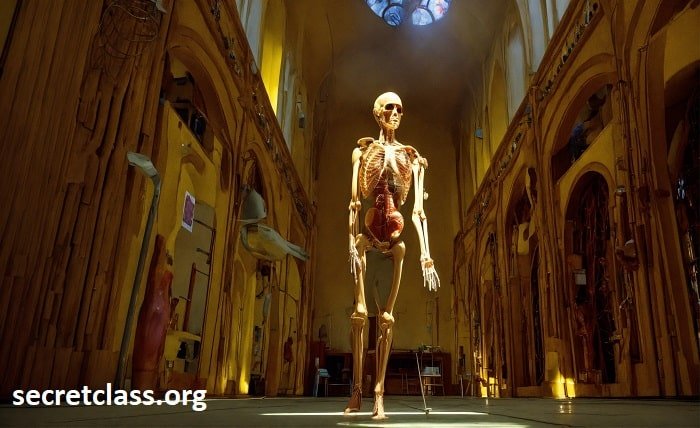The 1982 movie “Poltergeist” not only left an indelible mark on the horror genre but also on cinematic lore due to its use of real skeletons in several scenes. This blog post delves into the fascinating and eerie aspects of the production, exploring why real skeletons were used and how this choice affected the film and its legacy.
The Shocking Use of Real Skeletons
The 1982 movie “Poltergeist” is infamous for using real skeletons in its climactic pool scene. This decision was not just a stylistic choice but a budgetary one, as real skeletons were reportedly cheaper than plastic replicas at the time. This fact has become a cornerstone of the film’s enduring legacy in horror folklore.
Production Choices and Cost Considerations
The decision to use real skeletons in “Poltergeist” (1982) stemmed from practical and financial considerations. Production budgets often dictate such decisions, and in the early 1980s, authentic human skeletons were surprisingly less expensive than their fabricated counterparts, which influenced the filmmakers’ unsettling choice.
The Impact on Cast and Crew
The use of real skeletons in the 1982 movie “Poltergeist” had a profound impact on the cast and crew. Many were unaware of the props’ authenticity during filming, and the revelation afterward added a layer of genuine horror to their experience, blending their on-screen performances with real-life reactions.
Audience Reaction and Media Coverage
The revelation that the 1982 movie “Poltergeist” used real skeletons sparked a mix of fascination and horror among audiences. This choice attracted extensive media coverage and discussions on ethical standards in filmmaking, contributing to the film’s cult status and the urban legends surrounding its production.
Ethical Considerations in Using Real Skeletons
The ethical implications of using real skeletons in “Poltergeist” (1982) have been debated for years. This decision raises questions about respect for the deceased and the limits of authentic props in cinema, issues that continue to be relevant in discussions about horror filmmaking practices.
The “Poltergeist Curse” and Superstitions
The use of real skeletons in the 1982 movie “Poltergeist” contributed to the myth of the “Poltergeist curse.” Many fans and some of the cast members attributed the unexpected deaths and accidents involving the cast to the use of real human remains, intertwining the film’s narrative with real-life tragedies.
Influence on Horror Genre Standards
The decision to use real skeletons in “Poltergeist” (1982) set a controversial standard in the horror genre. It pushed the boundaries of what filmmakers were willing to do to elicit genuine fear and has since influenced the use of authentic elements in horror movies to enhance the atmosphere and emotional impact.
Psychological Impact on Viewers
Knowing that real skeletons were used in the 1982 movie “Poltergeist” can alter the psychological impact on viewers, intensifying the fear and discomfort. This knowledge adds a layer of macabre authenticity to the viewing experience, making the horror more palpable and unsettling.
Legacy and Continued Interest
The legacy of using real skeletons in “Poltergeist” (1982) endures, continuing to draw interest from both new and old fans of the genre. Documentaries, interviews, and articles revisiting this choice underscore its significance in horror movie history and the perpetual curiosity it generates.
Modern Filmmaking and Prop Ethics
Today, the film industry operates with more stringent ethical standards regarding the use of real human remains and other sensitive materials. The controversy surrounding “Poltergeist” and its real skeletons has influenced policies and practices, ensuring more respect and dignity in prop usage.
Conclusion
The 1982 movie “Poltergeist” remains a landmark in horror cinema, not only for its supernatural thrills but also for its controversial use of real skeletons. This choice has sparked discussions on ethical filmmaking, influenced the horror genre, and added a haunting layer to its legacy. As we reflect on its impact, “Poltergeist” serves as a reminder of the complex interplay between cinematic artistry and moral responsibility.
FAQ
- Why did the 1982 movie “Poltergeist” use real skeletons?
Real skeletons were used in “Poltergeist” primarily because they were less expensive than artificial ones at the time, reflecting budgetary constraints more than artistic choices.
- Did the cast know real skeletons were used during filming?
Most of the cast was unaware that real skeletons were used until after the film’s completion, adding an eerie post-facto dimension to their experiences on set.
